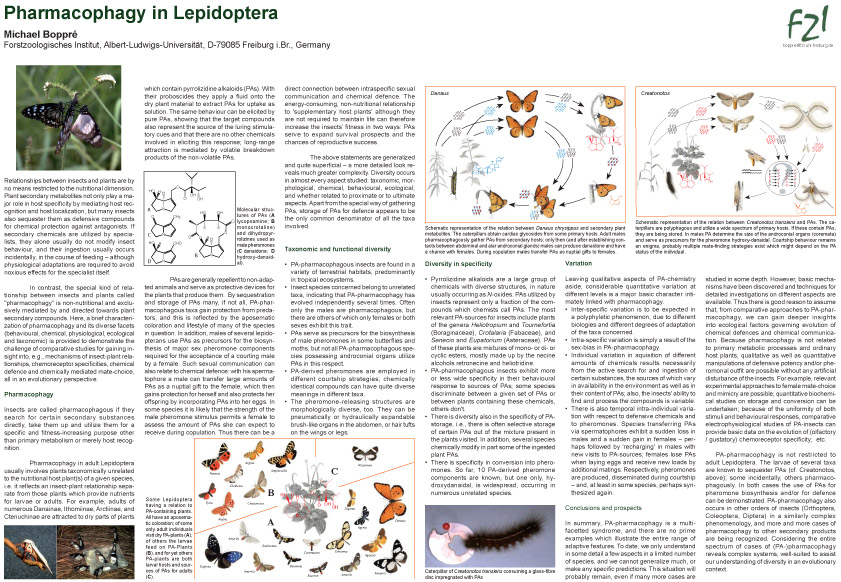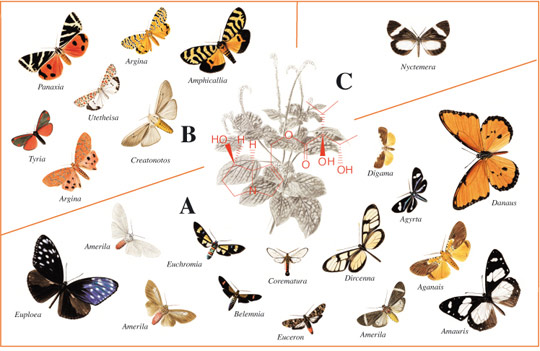PA-related pharmacophagy

With the recognition of the syndrome of pharmacophagy a novel type of animal-plant relationship has been found which is neither parasitic nor mutualistic and which has lots of consequences. We study in particular pharmacophagous relationsships of insects with plants producing pyrrolizidine alkaloids.

Boppré M (1999) 'Drug-addicted' insects in Africa. Metamorphosis 10: 3-15 lesen / read
Pharmacophagy and its diverse functional aspects is introduced using examples from studies on relationships between insects and pyrrolizidine alkaloids (PAs) in Africa. Remaining open questions are outlined, emphasizing the overriding need for natural history information from the field on 'PA-insects' and 'PA-plants'.
Boppré M (1997) Pharmacophagy in adult Lepidoptera: the diversity of a syndrome. Pp 285-289 in Ulrich H (ed.) Tropical Biodiversity and Systematics. Proc Intern Symp Biodiversity and Systematics in Tropical Ecosystems. D-Bonn: ZFMK lesen / read
The multiplicity of facets involved in non nutritional relationships between adult Lepidoptera and plants containing pyrrolizidine alkaloids are briefly discussed, emphasizing aspects of specificity and (specific, individual and temporal) variation and their consequences, e.g., for understanding mechanisms of chemical defence and sexual communication in an evolutionary context.
Boppré M (1986) Insects pharmacophagously utilizing defensive plant chemicals (pyrrolizidine alkaloids). Naturwissenschaften 73: 17-26. read
Insects of several orders (mainly Lepidoptera) gather pyrrolizidine alkaloids independent of feeding behaviour. By storing these secondary plant metabolites the insects gain protection from predators, and in various species the plant chemicals are used as precursors for the biosythesis of male pheromones; in Creatonotos they even regulate specifically the development of the androconial organs. The variety of aspects involved in this link between chemical defence and sexual communication as well as its consequences are discussed.
